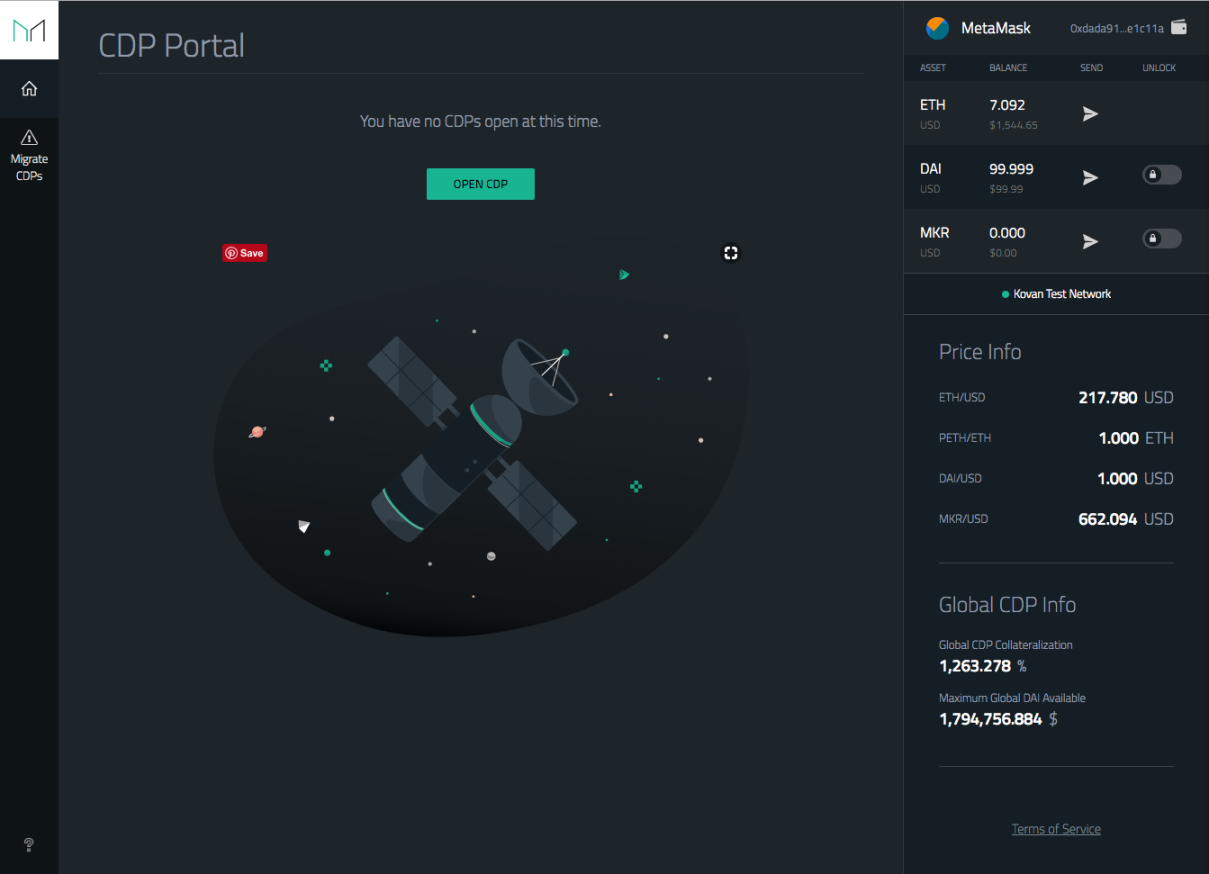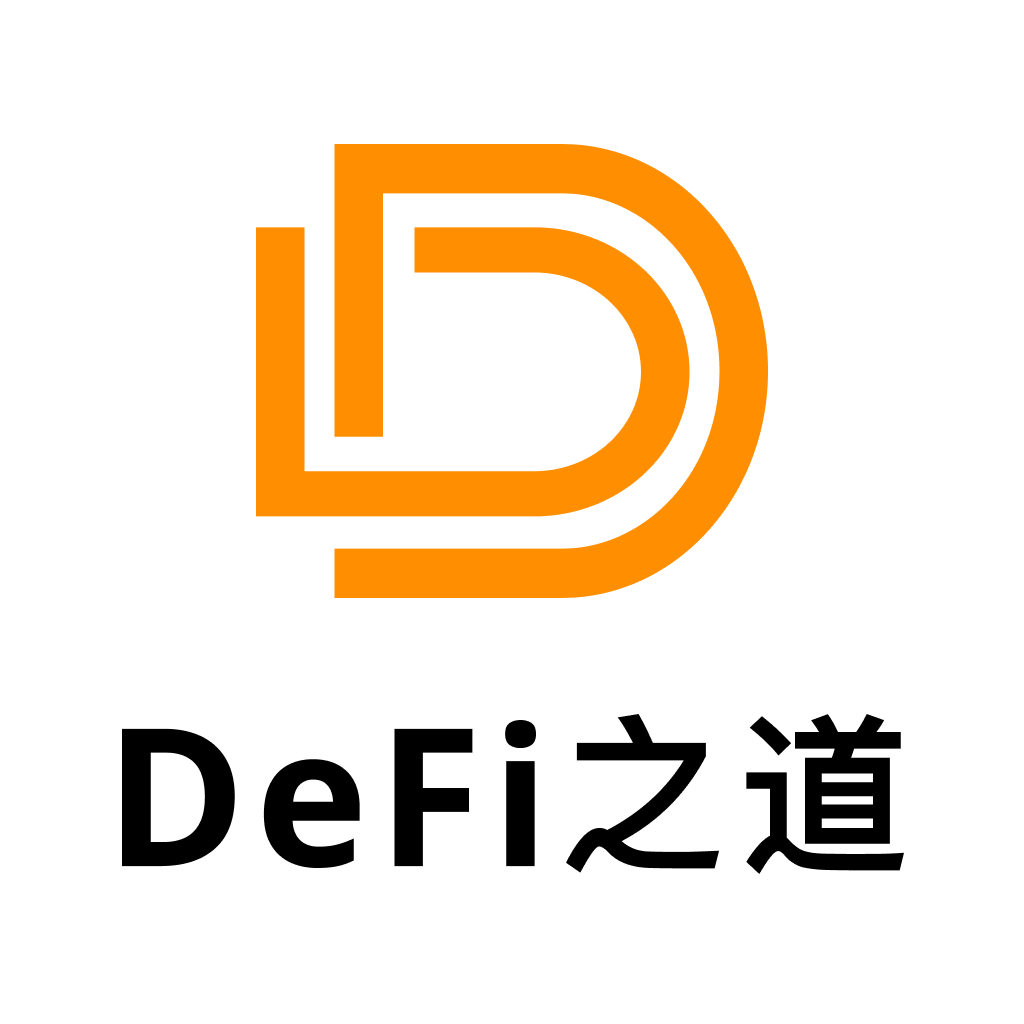万字深研:全景回顾DeFi发展历程,如何从灰烬中重生?
原文作者:CoinMarketCap 和 Spartan Labs
原文编译:DeFi 之道
《DeFi:重生》是 CoinMarketCap 和 Spartan Labs 的最新报告——涵盖了 DeFi 的现状、DeFi 发展的经验教训和进展,以及新兴行业的简史。
DeFi 已死了吗?
去中心化金融(DeFi)的创建已经席卷了加密行业。
这个故事源于 2016 年 Reddit 用户 u/vbuterin(现广为人知的以太坊联合创始人 Vitalik Buterin)的假设性思想实验。他当时提出了一个想法,以链上自动化做市商这种方式运行链上去中心化交易所,类似于预测市场。这随后推动创建了在区块链技术之上的去中心化金融系统。
此后,DeFi 行业飞速发展,成为一个充满机遇、价值亿万美元的蓬勃发展的生态系统。在 2021 年 12 月达到顶峰时,DeFi 凭借多个区块链生态系统和应用程序而获得了高达 2479.6 亿美元的总价值锁定 (TVL)。然而,在宏观经济不确定性、地缘政治紧张局势、DeFi 黑客攻击和漏洞增加、市场普遍低迷以及由于近期事件(Terra、3AC、Celsius 暴雷)导致的前景越来越悲观之后,DeFi 空间已经失去了很大的价值。2022 年 6 月,其 TVL 跌至 674.6 亿美元的低点。
这就引出了一个问题:DeFi 已经死了吗?
现在,这是一个很难回答的问题。说「没有」显得太仓促,我们看到了很多时刻「被否定」的 web3 最大主义者;说「是的」同样太仓促,这样会使我们低估这个空间的真正活力和稳健性,它经历了多少才能活下来,以及它还能成长和发展多少。
那么最好的答案就在「二者之间」。虽然 DeFi 肯定不会以任何方式消亡,但走上导致市值崩溃和 TVL 流失的老路根本不会给这个空间带来任何好处。
要想重生,DeFi 必须建立在之前周期的灰烬之上。前进的道路应始终以过去的教训为指导,因此这是我们首先要全面关注的地方。
DeFi 简史
在加密货币寒冬的严寒中,Uniswap、Maker Protocol 和 Compound 从第一批探索未知领域的探索者中脱颖而出。这些项目的创建都考虑到了类似的愿景,即创建一个去中心化且无需信任的金融系统,实现抗审查和经济包容,同时不影响其能力和效率。
借助这三个去中心化应用程序,无需信任的数字资产交易所、稳定币和加密贷款的想法成为现实。根据 DeFilllama 的说法,到 2019 年 6 月,这些协议累计积累了接近 5 亿美元 TVL 的惊人数字,这在当时是一项令人瞩目的壮举。
话虽如此,去中心化金融的想法在当时并不是真正可广泛使用的东西,只有少数生活在以太坊区块链上的智能合约。
「DeFi」是一个流行词,经常被抛出,作为对去中心化金融系统充满希望的未来的一瞥。向构建 DeFi 的巨大转变真正始于 2018 年 11 月诞生的 Uniswap。
DeFi 的诞生:链上自动化做市商 Uniswap
建立在 Vitalik Buterin 关于去中心化交易所的思想实验之上,Uniswap 作为以太坊上第一批链上自动化做市商协议推出。尽管 Bancor 最先提出了流动性池的概念,但 Uniswap 以其著名的「x * y = k」恒定产品池公式为大众普及了它。
Uniswap V1 的任务很简单,为用户提供一个界面,让他们在以太坊上无缝交换 ERC20 代币。它主要专注于去中心化、抗审查和安全,它有效地使 Uniswap 能够为用户创造一种安全可靠的方式,在没有中心化托管人的情况下无需信任地交易他们的数字资产。

资料来源:Uniswap
Uniswap 协议的代码被设计为推动行业向前发展的公共产品,它的代码是完全开源的,对早期投资者、采用者或开发者没有特殊待遇,没有治理代币或平台费用。
完全开源 Uniswap 协议代码的选择显然造就了当今跨多个区块链网络的很多去中心化交易所。
了解 Maker Protocol 和 DAI,第一个去中心化稳定币
Maker 协议平台使任何人都可以生成 DAI,这是第一个以 ETH 和 BTC 等加密资产为抵押的去中心化抵押稳定币。
由于加密货币的市场价值通常会经历大幅波动,因此对稳定币的需求是显而易见的。然而,当时唯一的市场产品是由中心化各方资产支持的中心化稳定币,这些资产面临托管和监管风险。
在去中心化经济中,适合 DAI 的产品市场很明确,因为它维护了加密行业的创始精神、抗审查和去中心化。

来源:Maker 协议
自成立以来,该协议及其稳定币已经经历了多次迭代。
2020 年 3 月 12 日,也就是被称为黑色星期四的一天,ETH 的价格经历了大幅下跌,并在 24 小时内下跌了 30% 以上。这种市场波动加上以太坊不断上涨的 gas 费给协议带来了巨大压力,因为许多 DAI 金库所有者的金库抵押不足并被清算。
与此同时,由于套利者在网络拥塞的情况下暂停操作,没有足够的清算人竞标可清算抵押品。这很快导致了稳定性问题,因为 DAI 与美元挂钩,并且 MKR 的价格在同一天大幅下跌了 50% 以上。
为了拯救 DAI,MakerDAO 社区提议添加由 Coinbase 的 Circle 支持的中心化稳定币 USDC,作为铸造 DAI 的抵押品,为协议及其 DAI 稳定币提供更高的稳定性。
虽然当时是一个有争议的决定,但抵押 USDC 被证明是止血的好举措,并有效地挽救了 Maker 协议。
Aave (ETHLend) 和 Compound:突破 DeFi 借贷的界限
ETHLend 于 2017 年推出,是以太坊上第一个去中心化借贷市场。作为同类平台中的第一个,该平台匹配了希望以安全可靠的方式参与抵押贷款头寸的个人贷方和借款人。
为了确保其安全性和去信任性,该平台利用以太坊上的智能合约来存储用户资金及其抵押品,以促进点对点贷款协议。该平台开放了一系列 DeFi 功能,交易者能够添加杠杆或做空加密资产,而企业和消费者可以在不出售基础抵押品的情况下获得现金流和流动性。

资料来源:ETHLend
话虽如此,ETHLend 有其局限性,因为其整个借贷过程在用户体验方面存在很多摩擦。作为一种点对点协议,贷方需要发布、管理和监督贷款报价和活跃贷款。整个过程往往缓慢而乏味,因为贷款必须手动融资。此外,平台参与者生活在世界各地的不同时区,使问题更加复杂。如果 DeFi 是金融的未来,那时候的 ETHLend 绝对不是。
这就是 Compound 进入视野的时候。
2018 年 9 月,Compound 在以太坊上推出了其算法和自主货币市场协议,允许任何人以无需信任的方式无摩擦地赚取利息或借入加密资产,而无需与交易对手互动。让 Compound 脱颖而出的是它引入了点对合约(Peer-to-contract)设计和动态借贷利率。
贷方和借方仅与借贷池交互,而不是与另一个用户交互,借贷池是一个包含用户池资产的智能合约储备。每个借贷市场都会自动计算供应和借贷利率,该利率会随着市场条件的调整而实时浮动。
这使得 Compound 能够有效地为贷方和借方提供有效的利率,以应对市场条件。

资料来源:Compound Finance
与借款人需要协商贷款期限和借款利率的传统信用中介不同,Compound 以一种无需信任和自动化的方式重新构想了这项服务,使所有人都能获得贷款,并允许贷方利用其加密资产产生收益。
这种基于池的模型允许在借款人支付借款利率而贷方从其提供的资产中获得利息时永久开设贷款头寸。这种动态由贷款价值比 (LTV) 机制平衡,这是衡量贷款头寸清算阈值的指标。
由于该协议是完全开源的,Compound 在去中心化经济中开创了算法链上货币市场协议设计方面发挥了重要作用。
ETHLend 从 Compound 中吸取了经验,并摆脱了去中心化的点对点借贷设计,最终将其平台重新命名为现在著名的 Aave 协议。
与 Compound 一样,Aave 的基础设施建立在其基于池的金库之上。然而,Aave 通过引入闪电贷、利率 swap 和流动性提供者(LP)代币化等创新功能,使 DeFi 贷款服务更进一步发展。
该协议此后经历了两次升级,现在是 Aave V3。

资料来源:Aave V1
虽然他们当时可能没有意识到这一点,但 Uniswap、MakerDAO、Aave 和 Compound 正在为整个 DeFi 行业的到来奠定基础,并为我们今天所知道的许多其他家喻户晓的名字铺平了道路。
事实上,2020 年和 2021 年是这个新兴行业突飞猛进的年份,因为许多人表示,他们开始突破 DeFi 的界限,使其发展超出了几年前最初设想的范围。
收益耕种的诞生
COMP 治理代币
2020 年 2 月 27 日,Compound 创始人 Robert Leshner 宣布推出新的 COMP 代币,作为引入新的社区主导治理系统的一种方式,该系统将取代 Compound 的中心化管理。
这一变化有效地允许 COMP 代币持有者在不依赖或要求项目团队的情况下建议、辩论和实施对 Compound 的更改。COMP 代币允许代币持有者将他们的投票权委托给他们选择的任何 ERC-20 地址;基本上允许其他人代表他们投票。

资料来源:Compound Finance
COMP 代币是第一个「治理代币」,使任何人都可以拥有 Compound 的股份,并在协议的未来计划中拥有积极的发言权。根据设计,COMP 代币直接分发到其最重要的利益相关者手中,例如协议的用户。
这种代币分发设计授权和激励了协议社区通过良好的治理共同管理协议的未来。在不知不觉中,这种新设计引起了巨大的转变,永远改变了加密行业。
虽然最初是为了社区治理,但 COMP 代币的分发标志着一个全新的范式转变,因为交易者能够推测 Compound 协议的未来价值。
实际上,用户开始使用 Compound 的唯一目的是为了耕种其代币,因此「收益耕种」一词被普及。
在 2020 年 6 月的代币生成事件之后不久,COMP 代币飙升至 336.22 美元的高位,比 4 天前增加了 399.51%。这一价格上涨将 COMP 代币推向了市值排名前 20 的加密货币。

来源:CoinMarketCap
从技术的角度来看,这种从中心化管理到社区治理的转变引发了各种新的创新——从去中心化治理到为协议吸引流动性的新方法。虽然当时已经很流行,但 Compound 协议的最活跃用户极大地受益于 COMP 代币形式的极高 APY。
这种方法将被证明是非常成功的,因为它吸引了许多新用户加入该协议。该协议的池非常受欢迎,以至于 APY 每分钟会迅速变化几个百分点。到了这样一个地步,积极寻求最高收益的用户试图将资产交换到最高 APY 池的过程自动化。
Andre Cronje (AC)的 Yearn Finance
接下来是 Yearn Finance,这是 DeFi 中的第一个收益耕种聚合器,由 Fantom 开发人员 Andre Cronje(AC)于 2020 年 7 月 17 日推出。为了优化从收益耕种机会中获得的回报,Yearn Finance 充当了一个共享金库,任何人都可以将他们的加密资产存入其中。
其金库是资金池,可以自动将资金部署到最佳策略中,为其储户带来最高收益。除了产生最高收益外,这些金库还通过将 gas 成本社会化、自动化收益产生和再平衡过程以及在新机会出现时自动转移资本来使用户受益。

资料来源:Yearn Finance
当时,有几种方法可以让他们的加密资产产生收益。最常见的方式包括通过向 Uniswap 或 Curve Finance 上的资产对提供流动性来赚取交易费用,或者只是通过向 Compound 或 Aave 等借贷平台提供资产来赚取借贷利息。
当激励性流动性战争开始时,这一切都发生了变化,Compound 是第一个以其 COMP 代币开启流动性激励的公司。当时每个 DeFi 协议都会引入自己的治理代币,并向其协议的用户提供代币分发。
这使得收益耕种变得更加复杂,因为收益变得更加有利可图。例如,用户将 DAI 提供给 Compound,将 cDAI(代表从 Compound 领取 DAI 的权利的代币)存入 Balancer,以便在 DAI 上赚取 COMP,在 cDAI 上赚取 BAL。
最重要的是,该策略将产生 DAI 的借贷利息和来自 Balancer 池的交易费用。Yearn Finance 将简化这一过程,并将其转变为被动投资者的一站式解决方案。
追随 Compound 的脚步,Yearn Finance 推出了自己的 YFI 治理代币。然而,更特别的其 ,Andre Cronje 宣布 YFI 的公允价值为 0 美元,因为没有代币销售,所有 YFI 代币都将由平台用户赚取。
尽管如此,一些人认为一种代币的价值应该大于或等于协议的 TVL。

来源:CoinMarketCap
如果应用将市值与 TVL 进行比较的概念,鉴于 YFI 当时提供的服务,它被严重低估了。再加上其高利润的收益,该协议获得了 TVL 的显着增加,导致价格出现天文数字的上涨。
从 0 美元的起点开始,Yearn 的治理代币 YFI 在推出仅 2 个月后就抵达了超过 43,000 美元的高位。
YAM 和食物代币浪潮
收益耕种创造了疯狂的流动性挖矿热潮,促使大量普通用户追逐最高收益。然而,谁也无法预测接下来会发生什么。
最初是加密货币和可访问的金融产品之间的融合,很快就演变成以模因币为主题的收益耕种的亚文化。

资料来源:Yam Finance
作为一项货币实验,Yam Finance 从一开始就探索了各种 DeFi 概念,例如弹性供应代币、协议金库治理、公平的代币分配机制和完全链上治理。该协议的治理代币以红薯(YAM)命名,均匀分布在八个质押池(COMP、LEND、LINK、MKR、SNX、wETH、YFI 和 ETH/AMPL LP)中,以覆盖整个 DeFi 社区。
在不到 48 小时内,这个收益耕种协议凭借其高利润的收益获得了超过 6 亿美元的 TVL,随后引发了 DeFi 食物代币耕种的狂热。一个接一个,凭空出现,你会看到「美味」的名字,比如 Pickle Finance、Cream Finance、Beefy.Finance、Kimchi、BurgerSwap、Tendies 等等。
人们会认为这是牛市高峰期兴奋的迹象,但 degen 终归还是 degen,无论如何他们都只是在模仿。不幸的是,在 YAM 的代币中发现了一个严重的错误,导致代币超发并最终导致代币价格下跌,造成超过 5 亿美元的财富损失。
同样,Yam Finance 的许多其他效仿和分叉项目也遭受了类似的命运。
SushiSwap:Uniswap 衍生产品
在这场 Yam 分叉、拉盘跑路和有问题的美味佳肴的宴会桌上,有一种协议在 DeFi 社区中引起了轰动。SushiSwap 是 Uniswap 的一个简单衍生产品,于 2020 年 8 月推出,允许用户在 SushiSwap 平台上质押其 Uniswap LP 代币以赚取 SUSHI 治理代币。
然而,SushiSwap 的创建者 Chef Nomi 更进一步,透露了将这些 Uniswap LP 代币兑换成新的 LP 代币的计划,新的 LP 代币将转移到 SushiSwap。这种被广泛称为「吸血鬼攻击」的新技术使 SushiSwap 能够从 Uniswap 中提取大量流动性来引导自己的流动性池。

资料来源:Sushiswap
由于当时 Uniswap 还没有治理代币,SushiSwap 的方法被证明是非常有效的。Uniswap 流动性提供者追逐其 LP 代币的最高收益机会,因为他们可以赚取 SUSHI 代币。
在 LP 代币迁移到 SushiSwap 的当天,该协议迅速从 Uniswap 的流动资金池中获得了超过 10 亿美元的 TVL。另一方面,Uniswap 经历了同等比例的 TVL 大规模外流,该协议的 TVL 迅速从超过 16 亿美元的高位跌至 5.3424 亿美元。


资料来源:DeFiLlama(TVL,第一张图片 = SushiSwap,第二张图片 = Uniswap)
在 2020 年 9 月接近指定的流动性迁移日期时,SUSHI 的价格在一天内大幅下跌了 70% 以上,因为其创建者大厨 Nomi 耗尽了 SushiSwap 协议的开发基金,将其换成当时价值约 1400 万美元的 37,400 ETH。
由于 Nomi 的行为被公开视为对 SushiSwap 社区的背叛,因此大厨 Nomi 面临着巨大的压力和强烈反对。为满足社区的需求,Nomi 将 SushiSwap 的智能合约私钥交给了 FTX 的首席执行官 Sam Bankman-Fried,后者将流动性迁移推迟到 2020 年 9 月 9 日。
在成功从 Uniswap 转移超过 8 亿美元的流动性后不久,Nomi 出于内疚自愿将套现获得的 ETH 退还给社区,并随后为自己的行为公开道歉。一周后,FTX 的 Bankman-Fried 在实施多重签名后将 SushiSwap 协议返回给其社区,以防止唯一的不良行为者完全控制该协议。
尽管有戏剧性,SushiSwap 激进的流动性挖矿激励措施和启动方式激发了许多未来的项目,因为在不断发展的 DeFi 生态系统中,争取 TVL 变得越来越困难。
以太坊可扩展性和 L1 军备竞赛
随之而来的区块链扩展问题
2020 年 DeFi 夏季即将结束,进入 2021 年,以太坊的 DeFi 生态系统蓬勃发展,在主网上部署了无数的去中心化应用程序。
ETH 的价格飙升至新高,从 2021 年 5 月的 150 美元涨到一年后的 4100 美元的峰值。随着用户探索以太坊的 DeFi 生态系统,链上活动继续加速,以太坊的 gas 费开始变得越来越高,有时在 Uniswap 上进行简单的交换交易需要花费 30 多美元的 ETH。
除此之外,随着 OpenSea 和 CryptoPunks 在销量和价格行为方面抢尽风头,不可替代代币 (NFT) 市场开始升温并获得牵引力。每天,OpenSea 都会一直位居 Etherscan 上 ETH gas 消耗量最高的项目之列。

资料来源:Etherscan(以太坊的平均交易费用)
根据以太坊的创建者 Vitalik Buterin 的说法,每个区块链都应该努力实现三个关键属性:去中心化、安全性和可扩展性。然而,在坚持简单的技术情况下,一个区块链项目只能实现三个中的两个,因此他称之为「区块链可扩展性三难困境」。
当时,很明显以太坊需要扩展。但是,Optimistic rollup 和 ZK rollup 等第 2 层扩展解决方案尚未准备好,仍处于开发阶段。
在某个时候,在普通零售用户变得相对难以访问且价格昂贵之后,资金开始从以太坊转移到更绿色的牧场,如 Binance Smart Chain、Polygon、Solana、Avalanche、Fantom 和 Terra,从而带动替代性第 1 层区块链叙事进入全涡轮时代。

资料来源:Vitalik Buterin
第 1 层区块链军备竞赛
每个第一层(Layer 1)区块链生态系统的基金会都宣布了他们自己的流动性挖矿激励和建设者资助计划,以吸引开发者和用户。
币安在宣布为币安智能链 (BSC) 上的 DeFi 项目提供 1 亿美元的支持基金时,开启了这场狂热。尽管其对价格走势的影响并非立竿见影,但 2021 年 2 月,随着 BNB 的价格在短短 4 个月内从 40 美元飙升至 686 美元的峰值,BSC 链上的链上活动开始受到关注。

来源:CoinMarketCap
来到这个新生态系统的开发人员很快意识到他们不需要重新发明轮子。由于以太坊已经有许多成功的应用程序找到了适合他们的产品市场,开发人员在 BSC 上分叉并重新命名它们,以快速获得 TVL 和新生态系统中的市场份额,以期在 1 亿美元的激励蛋糕中分一杯羹。
奇怪的是,最成功的应用(就市场份额而言)恰好是 Uniswap 分叉以及美味的食物农场,著名的 PancakeSwap。虽然不完全是复制粘贴,但 PancakeSwap 巩固了自己作为 BSC 上的核心去中心化交易所(DEX)的地位,并具有诸如质押即服务、收益耕种、Launchpad 以及预测市场等附加功能。

资料来源:PancakeSwap
以太坊无法扩展的说法足够强烈,以至于每个主要的第 1 层生态系统都经历了自己的鼎盛时期,因为流动性挖矿激励措施在一场典型的牛市期间被抛出。
与 BSC 上发生的情况类似,开发人员将复制相同的策略,即在尽可能快的时间内推出 DeFi 应用程序,以获得最大的市场份额和 TVL,从而有资格获得生态系统拨款。尽管像 Solana 和 Terra 这样的非以太坊虚拟机 (EVM) 链由于代码库的差异而无法分叉以太坊应用程序,但许多新协议都建立在现有 DeFi 解决方案的设计架构之上。
由于大多数年轻的生态系统都缺少关键的 DeFi 原语,例如去中心化交易所、借贷市场、收益聚合器、稳定币和跨链桥,因此有大量的机会可供利用。

资料来源:DeFiLlama
这一趋势在 2021 年到 2022 年期间一直持续,因为 DeFi degens 从一个生态系统跳到另一个生态系统以赚取流动性挖矿奖励。Crypto Twitter 经常将此称为「L1 Rotation」,甚至在提到 Solana、Terra 和 Avalanche 第 1 层轮换游戏时创造了「SoLunAvax」一词。
随着以太坊 DeFi 的 TVL 市场份额逐渐被新的生态系统所蚕食,这些生态系统提供更便宜的费用、更快的交易最终确定性和整体上更加用户友好的体验,Uniswap、Aave 和 Curve Finance 等第一代 DeFi 的许多应用程序被迫将他们的影响力扩展到更新的区块链生态系统。
最终,这种叙事转变进一步验证了多链未来的论点。通过跨链应用程序和资产桥梁的创建和扩展,主权 Layer 1 区块链比以往任何时候都更加互联。
然而,参考 Vitalik Buterin 之前提到的可扩展性三难困境的概念,这些较新的第 1 层区块链并非没有自己的问题和成长的痛苦,因为为了速度和可扩展性而牺牲了不同程度的去中心化和安全性。
话虽如此,多个 DeFi 生态系统的诞生意味着从以太坊的主网上减轻了大量负载,不可避免地减少了网络拥塞。
互操作性:多链的未来
随着年轻区块链的兴起,很明显这些生态系统开始变得更加孤立。虽然已经是一个新兴行业,但在较新的区块链生态系统中运行的 DeFi 协议在获得流动性和用户采用方面遇到了相当大的困难。互操作性是区块链技术未来的关键部分,也是 DeFi 基础设施的重要组成部分。
随着项目和用例数量的增加,对区块链之间互操作性的需求也在增加。互操作性将使多链生态系统成为可能,不同的链可以相互通信,从经济和技术的角度来看,它们可以实时协作和共享数据。
许多公司和团队已经通过创建允许一个区块链与另一个区块链直接或间接通过第三方进行通信的解决方案来实现这一目标。从高层次来看,可互操作的解决方案可以分为两个不同的类别:(a) 追溯构建在不可互操作生态系统上的补丁解决方案,以及 (b) 本机可互操作解决方案。
进一步阐述,追溯构建在不可互操作生态系统上的补丁解决方案是指构建在现有链之上的互操作解决方案,这些解决方案不是为互操作性而构建的。这些可以进一步提炼成中心化交易所和跨链资产桥等解决方案。

资料来源:币安
中心化交易所是最常用的加密交换类型,因为它们可以被认为是交易加密货币的「传统」方式。在中心化交易所中,用户将资金存入由交易所控制的账户。然后,交易所跟踪中央订单簿中的所有交易,并将资金保存在托管中,直到需要进行链上交易为止。
尽管无论区块链网络如何,都可以在不同加密货币之间实现快速轻松的交易用户体验,但这种形式的链下互操作性增加了多层复杂性,因为这些平台受到严格的监管。对于为客户提供服务的中心化交易所,交易所必须遵守每个国家 / 地区自己的法律和司法管辖区,大多数时候要求客户通过了解您的客户(KYC)流程来验证他们的个人身份,然后才能允许用户在链上提取他们的资产并重新获得对其资金的保管权。
无意中,这使用户面临交易对手和信用风险,因为如果出现流动性问题甚至破产,交易所可以在任何给定时间扣留用户的资金。

资料来源:Dmitriy Berenzon,2021 年 9 月 8 日
在链上互操作性方面,上图描绘了截至 2021 年 9 月区块链如何相互连接。根据去中心化的核心原则,跨链资产桥梁,如 Wrapped BTC、Multichain(以前的 AnySwap)和 Portal(以前的 Wormhole Bridge)选择了一种更无需许可的方法。这些解决方案是根据类似的设计架构构建的,使用户能够以无需信任的方式将其加密资产从一条链转移到另一条链。
跨链资产桥通常在「锁定和铸造」机制上运行,其中源链上的资产被锁定在桥的智能合约金库中,而可赎回的「封装」版本的本地资产被铸造在目标链上。
这种设计的基本原理是因为来自一条链的原生资产不能原生存在于其他主权区块链上,因此这些新铸造的与目标链上价值挂钩的封装资产可以反向燃烧并赎回源链上的等价原生资产。
虽然仍然是最常用的互操作性形式,TVL 超过 120 亿美元,但由于锁定在其中的大量资金,跨链资产桥一直是许多黑客攻击和利用的主要目标。
仅在过去两年中,就有超过 18.5 亿美元的池资金被黑客从 Ronin Network 和 Wormhole 桥黑客等少数事件中吸走,分别损失 6.24 亿美元和 3.26 亿美元。

资料来源:Rekt News - 黑客攻击排行榜
虽然大多数跨链桥通常以类似的方式运行,但每种设计都有一些变化,其中一些在结构上比其他的更中心化,并且存在额外的缺陷,例如审查风险和流动性差。尽管存在这些差异,但 Halborn 的区块链安全专家发现,大多数区块链网桥黑客攻击都针对一些特定的攻击媒介,这些攻击媒介通常旨在导致在一个区块链上释放代币,而在另一个区块链上没有相应的存款。在最近的历史中,漏洞利用主要通过以下几种方式进行:
1. 虚假充值事件:
跨链桥经常密切关注一个区块链上的存款事件,以便开始向另一个区块链转移。如果攻击者可以在不进行有效存款或使用没有价值的代币进行存款的情况下创建存款事件,则攻击者可以从另一端的网桥中取出资金。
2. 假存款:
在批准转移之前,每笔存款都由跨链桥验证。如果攻击者可以进行虚假存款以验证为真实存款,则此验证过程可能会被欺骗。Wormhole 事件就是这种情况,黑客利用数字签名验证的弱点窃取了 3.26 亿美元。
3. 验证者接管:
根据桥的设置方式,一些跨链桥上的一组验证者会投票以批准或不批准特定的转移。如果攻击者控制了这些验证者中的大多数,他们就可以授权虚构和有害的转移。在 Ronin Network 漏洞利用中,攻击者控制了桥的 9 个验证者中的 5 个,从而可以从桥的智能合约中提取资金。
尽管桥运营商采取了大量的代码审计和安全措施,但跨链桥的性质创造了一个复杂的环境,将自身暴露在众多风险中。鉴于上述中心化交易所和跨链资产桥面临的漏洞数量,很明显,构建多链未来需要本地可互操作的解决方案。

资料来源:Connext - Arjun Bhuptani
尽管许多团队最近都在迎接挑战并寻求更多创新方法,但构建互操作性解决方案并非易事。类似于 Vitalik Buterin 的可扩展性三难困境;存在互操作性三难困境。正如 Connext 的创始人 Arjun Bhuptani 所描述的,互操作性协议只能具有以下三个属性中的两个,通常会为了追求其他属性而牺牲一个或多个属性:
无信任,是指具有与底层区块链同等的安全性。
可扩展性,是指能够轻松集成到任何区块链上。
泛化性,是指处理更复杂的跨链数据的能力。
在撰写本文时,许多新的本机互操作解决方案已选择使用更复杂的方法来尝试实现上述所有三个属性。像 THORChain 这样的项目选择建立自己的去中心化流动性网络,充当全链去中心化交易所 (DEX),从而将脱钩风险转移给各个流动性池提供者;Cosmos 和 Polkadot 等互操作性中心率先提出了同质「网络网络」的概念,因为它们充当了多个第 1 层区块链的可互操作网络的基础第 0 层。
尽管设计更复杂,但这些协议在用户采用和获得更多市场份额方面取得了不同程度的成功。
然而,最近的互操作性设计似乎是最有前途的,因为它们采用了优雅且可扩展的方法。与传统的网桥设计相比,LayerZero、Axelar 网络和 Router 协议等跨链通信协议远远超出了封装资产和中心化系统,它通过中继通用和复杂数据的想法,减少了许多移动部件和攻击向量。节点、中继器和预言机的混合,以建立快速、经济高效和去中心化的区块链间通信,同时不影响安全性。
虽然不像其前辈那样被广泛采用,但这些考虑到互操作性而构建的新解决方案似乎是朝着构建多链未来和解决互操作性三难困境的一个有希望的进步。
混乱的水域和前进的道路
然而,从那时起,随着我们进入 2022 年,随着一些不幸事件的发生,整个加密货币市场开始出现问题。
首先,由于受困于过去 2 到 3 年困扰的新冠肺炎大流行,所有国家都存在通货膨胀上升的问题。在地缘政治上,今年 2 月爆发的俄乌战争也引发了很多紧张和担忧。所有这些最终导致宏观经济的巨大不稳定,因为美联储最终转向加息来对抗通胀,引发市场对即将到来的衰退的担忧。
因此,不出所料,全球市场都遭受了大幅下滑。标准普尔 500 指数大幅下跌,更广泛的加密市场同样暴跌,而 DeFi 市场也受到了相当大的打击。
坏消息并不止于此。墨菲定律规定,任何可能出错的事情最终都会出错,而且是在最糟糕的时候。这句格言用在加密市场再好不过了。
由于市场参与者刚刚接受上述宏观经济催化剂,众所周知的棺材上的最后一颗钉子从内部钻入了加密货币市场。当时这个领域中最受欢迎的宠儿之一 UST 不幸遭遇了脱钩。这导致了 Anchor 银行挤兑,然后 Terra 最终不可避免地因恶性通货膨胀而崩溃,一起沉没的还有 600 亿美元的巨额资金。Terra 的崩盘对整个空间产生了严重影响。
从这里开始,三箭资本(3 AC),当时行业内最大的玩家之一,突发暴雷。Celsius、BlockFi、Babel 和 Voyager 等大型 CeFi 贷方也因 Terra 和 3 AC 崩盘的蔓延而崩溃。由于 CeFi 贷方被迫偿还 MakerDAO 和 Aave 等 DeFi 借贷协议以解锁其抵押品,stETH 由于所有强制抛售而开始以低于 ETH 的价格交易,进一步加剧了市场形势。
随着加密货币总市值的暴跌,我们还看到,随着 TVL 开始迅速退出生态系统,DeFi 的总市值在 2022 年第二季度暴跌了 75%。尽管此后 DeFi 总市值已经有所恢复,但全面复苏的道路仍然漫长而艰巨。
我们究竟从这里去哪里?
Terra 的崩溃虽然非常不幸,但有助于发掘算法稳定币模型的脆弱性,以及在更大的 DeFi 生态系统中对更可持续的代币经济学的需求。这为 DeFi 指明了前进的方向。
凭空印刷稳定币的行为在持续时创造了奇迹,但很可惜——这绝不是可持续的。
作为对上述内容的一个非常庄严的提醒,在 UST 失去挂钩的那一刻,Terra 在短短几天内就崩溃了,随后在 2022 年 5 月 9 日至 14 日死亡螺旋期间,价格从 1 美元跌至 0.12 美元。
很明显,有些事情必须彻底改变。DeFi 生态系统不应该依靠超级雇佣资本来支撑。如果我们想要一个充满活力、强大且最重要的是——在周期中可持续发展的 DeFi 生态系统,这根本不明智。如果不存在可持续性,那么 DeFi 生态系统也将永远不会以任何有意义的方式成为实质性的。
DeFi:重生
在 Spartan Labs Research 看来,我们看到了一条明确的道路,让 DeFi 从过去的灰烬中走出来,至少在中短期内是这样。
警告:「重生」不等于繁荣;这两者必然是相互排斥的。因此,Spartan Labs 和 CoinMarketCap 都没有声称 DeFi 将在未来几个月内经历繁荣。相反,在我们看来,这些只是生态系统应该采取的几个步骤,以从过去的经验教训中向前发展。
为了让 DeFi 生态系统从目前陷入的相对低谷中重生,并真正从过去的教训中吸取教训,必须进行三个主要的支点和进展。
首先,所有给定的 DeFi 协议都必须在更大程度上优先考虑自己的可持续现金流生成能力。在过去的一两年里,大多数 DeFi 项目(很大程度上是由于牛市周期产生的极度兴奋)非常公开地关注其路线图和运营的用户获取 /TVL 引导方面。然而,在牛市周期之后,我们现在开始意识到,这可能不是 DeFi 协议长期可持续性和整体寿命的最佳策略。这是我们将在下一节中进一步阐明的内容。
接下来,主导 DeFi 领域的代币经济学模型也必须不断发展以适应不断变化的时代。协议必须学习(通过其代币经济学策略)来吸引与其各自长期目标和愿景相一致的适当用户群,而不是依赖雇佣资本。
最后,我们还认为,合成资产的兴起将推动 DeFi 空间向前发展,并在未来许多年在很大程度上维持它。毕竟,就 DeFi 和 web3 而言,衍生品领域在很大程度上仍未开发。随着合成资产的兴起,也许这个 DeFi 子垂直领域的潜力可以最大化到它真正应该达到的程度。
转向可持续的现金流生成协议
目睹 LUNA 和 UST 的全面崩盘,这两者(当时)按市值排名前 10 位,在几天之内就砰然倒塌,这严重动摇了整个市场的信心。
市场中挥之不去的恐惧、不确定性和怀疑(直到今天)引发了关于理想 DeFi 协议应该是什么样的叙述的巨大转变。投资者不再盲目地渴望庞氏骗局的收益和功能,这些收益和功能承诺如果他们工作就会获得高得离谱的回报。
相反,投资者开始将目光投向真正的稳定性和可持续性,以确保他们的代币投资能够承受定义加密 /DeFi 市场的动荡市场条件,同时仍然提供可能超过传统市场的可观回报。
因此,虽然 2021 年和 2022 年早期的 DeFi 在很大程度上是由高得离谱的 APR(想想 Olympus DAO、Wonderland)和流动性挖矿激励措施的兴衰决定的,这两者都是专门针对大规模用户的——许多人现在意识到,真正的关键(对于用户和建设者)在于用户保留策略,这是上述两种模型都缺乏的。
对于构建者而言,现在不应仅仅将大量用户带到您的平台和协议上。虽然很重要,但它不应该是项目优先考虑的唯一事情。获得用户后发生的事情也非常重要,因为这基本上是用户首先被引入的原因。现在的关键问题变成了:项目和协议如何留住他们已经被大众认可的用户?他们如何围绕所述用户创造一种粘性形式和护城河?
对于用户而言,现在不应仅仅只是关于高回报和收益率的崇高承诺,而没有财务数据可以为他们提供实质性的体现。最近,事实证明,一旦任何事情发生了遥远的事情,项目所有者就太容易(并且经常)打破了所说的崇高承诺。现在有项目证明他们所吹捧的回报和收益是可能的和可持续的,因为他们现有的运营,用户在考虑对上述项目进行任何形式的投资之前,绝对应该对此保持严格。
在这个时刻,顺便说一句:我们上面提到的高得离谱的 APR 和流动性挖矿激励措施已被加密货币领域内外的许多人批评为「庞氏经济学」。虽然我们确实明白为什么他们会受到这样的批评,但我们谦卑地请求不同。出于所有意图和目的,「庞氏」一词的含义掩盖了欺诈的意图。将所有承诺高收益的 DeFi 协议贴上「庞氏骗局」的标签,对于那些有意为用户提供实质性价值但由于其吸引的资本的雇佣性质而未能这样做的人来说是不公平的。诚然,肯定有一些是为了诈骗(地毯)而建造的,但如此笼统地谈论它是不合适的。
回到重点,将重点明显转移到用户保留上(通过真正的价值生成)导致了创收协议的兴起,对于像 UNI 和 AAVE 这样的一些人来说,这是第二次出现。
很明显,用户现在正在寻求投资于实质性价值,而不是承诺的价值。这在很大程度上意味着能够以一致和可持续的方式产生和累积费用的运营。
下面,我们将探讨几个已经这样做的协议,其他人应该学习和 / 或效仿他们的押注,以成为更大的 DeFi 生态系统的一部分。
Uniswap (UNI),费用生成之王

作为以太坊上的第一个 AMM 和在费用产生方面无可争议的领导者,Uniswap 通过允许用户在不同费用等级的自定义价格范围内提供流动性,彻底改变了流动性提供 (LP) 的工作方式。
考虑到动荡的市场状况,Uniswap 在 2022 年平均每天收取 16-30 万美元的费用(截至撰写本文时),在产生各种稳定收入流方面做得非常好。
协议产生的费用全部支付给 LP 用户,协议费用目前仍设为零。
AAVE,最大的跨链货币市场

接下来,另一个通过稳定的费用计提产生了一些真正的实质性价值的协议是 AAVE,它是最大的跨链货币市场,TVL 为 63 亿美元。
尽管像 Celsius 和 Voyager 这样的中心化货币市场最终在这次市场低迷期间崩溃了,但 AAVE 经受住了时间的考验,并且仍然功能齐全。事实上,它甚至在 2022 年(截至撰写本文时)每天稳定地产生约 700-900 K 美元的费用。
GMX,一颗冉冉升起的新星

最近,我们还看到了几种去中心化永续协议的兴起。一方面,GMX 是建立在 Avalanche 和 Arbitrum 之上的快速发展的去中心化永续交易所。该协议在 2022 年吸引了大量的 TVL,从 1.08 亿美元飙升至 2.89 亿美元。GMX 的 TVL 急剧增加反映了市场希望在没有 KYC 的以太坊之外的区块链上进行永续交易。
GMX 允许用户通过以 GLP 代币(这是衡量 BTC、ETH、AVAX 和稳定币等代币的指数)的形式利用从其他用户借来的流动性来利用高达抵押品 30 倍的杠杆。
该协议产生的 70% 的费用与 GLP 持有者共享,而剩余的 30% 与 GMX 质押者共享。
Synthetix (SNX),一种收入分享协议

最后,最近变得非常流行的收入 / 费用共享协议将是 Synthetix (SNX)。在某些情况下,Synthetix 是一种衍生流动性协议,允许用户创建合成资产并交易永续期货。Synthetix 也是最早利用合成资产弥合稳定币、股票市场和商品市场之间空缺的 DeFi 协议之一。
最近,Kwenta、Lyra、Curve 和 1 Inch 等协议建立在 Synthetix 之上,以利用 Synthetix 债务池的深度流动性,并允许在减少滑点的情况下进行高效交易。由于这些不同的协议通过 Synthetix 进行交易,Synthetix 将产生费用,随后将与 SNX 质押者共享。
因此,SNX 在 2022 年产生的费用从每天 20,000-80,000 美元急剧增加到每天 150,000-300,000 美元(截至撰写本文时)。
向可持续代币经济学的转变
从上面我们可以看出,随着用户开始寻找易于制造的背后真正的重量,通过持续的创收来产生和维持真正的实质性价值的能力现在可能会定义这一现有的新 DeFi 协议浪潮崇高的承诺和 APR。随着 DeFi 市值和总 TVL 的缩水幅度与最近一样,那些留下来的人肯定会并且正确地无限地难以取悦,更难留住,并且对他们的资本更加严格。有魅力的领导者将不再削减它;在这个新时代,有效的运营必须成为任何成功的 DeFi 协议的基石。
然而,这还不够。虽然这是所有 DeFi 协议在这种牛市后的背景下生存和发展都应该满足的基线标准,但 DeFi 协议还应该采取更多措施来确保它们只会吸引合适的用户。如果不这样做,将导致雇佣资本大量涌入,如前所述,如果价格再次下跌,这些资金可能会大量流失。协议的生存本质上与加密市场的波动价格行为密切相关,这一事实对于任何给定的 DeFi 协议的寿命和维持都不是理想的,应该在未来得到适当的解决。
这就是代币经济学的概念以及博弈论发挥作用的地方。随着协议转向真正价值和创收的实质性模型,他们还必须确保为他们提供服务的用户将在很大程度上与其长期目标和愿景保持一致。因此,必须从现有系统中增强和扩充整个 DeFi 协议的代币经济学模型才能满足这一需求。
在 DeFi 的早期阶段,正如在本报告中多次提到的那样,协议提供了极高的回报,作为一种进入市场的策略,以引导流动性并在生态系统中获得市场份额。高代币释放意味着这些协议面临着与时间赛跑,以利用其市场份额来克服流入生态系统的代币稀释率。
当 Curve 创建了当今许多协议中广泛使用的流行 ve 模型时,这个问题引发了对可持续代币经济学的首次尝试。
最初的 ve 模型是一种简单但有效的协议方法,可以减少抛售压力,同时通过增加奖励来激励长期持有者。Curve 允许用户将其 CRV 锁定长达 4 年,以换取 veCRV 奖励的 x2.5 提升。因此,CRV 的激励锁定有助于减少 CRV 的流通供应,并奖励那些长期相信该项目并选择长期锁定的人。

当投票权的代币贿赂展示了协议如何将其治理权货币化时,ve 模型还引发了对 DeFi 场景的二次影响。
Convex 协议旨在在协议上积累质押的 CRV,以改善其在 Curve 生态系统中的治理影响力。这最终导致了臭名昭著的 Curve 战争,其中协议竞相积累大量 CRV 以影响 Curve 上的治理提案。

随着 ve 模型的兴起,我们已经开始看到最近出现的各种迭代的稳步进展。在我们看来,这种进展不太可能很快消失,更新的协议 / 构建者将很好地从这些迭代中最好的那里学习。
对于 ve 模型的上述迭代的一些(非详尽的)示例,我们将研究在自己的实现中表现相对较好的两个协议。
Trader Joe (JOE)
一方面,Trader Joe 是 Avalanche 上最大的 AMM,拥有 2.2534 亿美元的 TVL。它于 2022 年 3 月推出了 veJOE、sJOE 和 rJOE。
Trader Joe 团队选择将 JOE 代币的用例细分为 3 个独立的组件:
veJOE - LP 奖励和协议治理能力的提升
sJOE - 协议费用的利润分享
rJOE - 来自 launchpad 代币销售的分配
通过细分这些用例,Trader Joe 试图让用户专注于 DEX 中最适合他们需求的方面。
veJOE 还选择取消冗长的锁定,而是尝试通过虚拟积分累积的承诺来激励长期质押。他们的前提简单明了:您投注的时间越长,您获得的虚拟积分就越多。
拥有更多虚拟积分可以让用户从 LPing TraderJoe 平台获得额外奖励。用户可以在任何给定时间点解除质押和交易他们的 JOE 代币;他们只需要放弃他们积累的虚拟积分。
Platypus.finance(PTP)

接下来,Platypus.finance 是 Avalanche 上的开放流动性和单面稳定币 AMM。它使用单变量滑点函数而不是不变曲线,并允许提供单币流动性。目前,它已经在 TVL 中积累了 1.91 亿美元。
为了进一步阐述 Platypus 的代币经济学,$PTP 是 LP 可以通过提供流动性获得的治理和实用代币,而 $vePTP 是通过质押 $PTP 获得的奖励提升代币。
对于后者,用户可以抵押 PTP 每小时获得 0.014 个 vePTP,其中需要 10 个月才能达到 vePTP 上限。这是一个类似于 veJOE 的模型,用户将获得与其 vePTP 分数成正比的奖励。
当涉及到 vePTP 模型时,还有一些机制可以限制鲸鱼的影响,这可以用这个等式最好地表示:

详细地说,存款权重和 vePTP 分数将始终是平方根,以限制 PTP 代币的鲸鱼耕种的影响。这是实现 PTP 发行更公平地分配给用户的一个不错的尝试,但更精明的用户可以轻松规避。
Platypus 还利用 Platypus Heroes NFT 项目将一些游戏化元素注入到 vePTP 模型中。在这里,Platypus Heroes NFT 将允许用户以更快的速度累积 vePTP 分数,同时还允许他们访问封闭社区。
这些项目以及更多项目如何继续在 veModel 上构建和创新将会很有趣,我们肯定还没有看到最后一个。如前所述,新兴协议将很好地学习并建立在 JOE、PTP 等协议模型的基础上。
可持续 DeFi 协议框架
尽管有利有弊,ve 模型(及其迭代)揭示了任何想要可持续并与产生价值一致的给定协议所需的基石框架。
我们将上述基石框架总结为一个简明的表格,项目在运营规划时可以参考:
供应——通过锁定来限制流通代币释放以最小化销售压力
需求——通过激励大型长期质押者来引入协议级别的需求
创收——协议可以创收,以确保商业模式的长期可行性
收入分配——与长期质押者分享协议收入,让持有者参与协议的成功
简单性——拥有一个简单易懂的代币经济学模型,以促进用户轻松加入
供需平衡——根据预期需求随时间的增长对代币发行进行建模
从上述内容扩展,我们还可以从可持续和护城河协议的构成中汲取 4 个经验教训:
需要摆脱高 APR 和流动性挖矿来引导流动性
在协议采用方面需要关注正循环的飞轮
需要专注于建立一个真正相信协议愿景的核心社区(而不是雇佣资本)
需要摆脱稀释性奖励。替代方案是:
稳定币奖励(TRI、JOE、SNX)
托管奖励(GMX、SNX、ILV)
综上所述,这并不意味着 ve 模型(及其迭代)必然是下一波 DeFi 创新的全部和最终模型。
事实上,我们认为恰恰相反。在像 DeFi 这样充满活力的空间中,从来没有千篇一律的模型。这种心态只会让任何采用它的协议失败。
因此,随着时代(和市场)的变化,协议及其各自的代币经济学模型也应如此。协议模型永远不应该随着时间的推移保持静态——在这个空间中,被动永远不会得到回报,并且总是需要主动的反思和适应。
事实上,我们已经开始看到一些协议以自己的方式推动这种反射性变化。我们将在下面的部分中探讨其中一些新模型。
代币经济学的进一步发展
无代币发行协议
在某些情况下——YFI 如何构建他们的发布可能会构成无代币释放协议的最佳示例。为了阐明,能够产生收入的代币可能会选择在引导阶段后转向无排放模型。在这样的模型中,应该逐渐从原生代币的填充发行转向协议费用产生的现金流奖励。
通过这种方式,将有强烈的动力促使早期采用,并密切关注收入模式的可持续性。此外,由于供应极其稀缺,代币(以及扩展的协议)将更能抵抗抛售压力。
当然,协议也可以选择采用非常低的发行来解释协议的逐渐增长。
动态代币发行
最后,基于我们的信念(DeFi 空间是一个始终在发展的空间,并且协议将通过积极适应做得很好,我们相信代币经济学模型最终会演变成不断变化的、稳健的和此类模型在高层次上将涉及根据需求和利润塑造代币发行,为所述代币提供最低限度。
通过这种方式,动态发行允许协议保守,并且不会过度承诺任何特定的发行结构。
然而,这里的一个问题是团队可能会利用发行的动态特性来实现他们自己的自私和 / 或恶意手段。为了缓解这种情况,我们可能会考虑 Soulbound NFT——本质上可以充当数字 CV 的不可转让 NFT——以确保所有相关 DAO 管理成员的可信度。
此外,增加时长限制还可以确保变化是渐进的,不会发生突然的变化。这可能是我们将在更深层次上更多考虑的事情,所以请务必留意!
合成资产和衍生品的兴起
除了新的代币经济学模型之外,最近在 DeFi 领域出现(并且可能会继续出现)的另一个子垂直领域是合成资产和衍生品领域,其中合成资产是一种代币化衍生品。
在传统金融中,来自合成资产的现金流主要来源于在合成产品本身中复制的基础资产。然而,在 DeFi 中,现金流也可以从新创建的合成资产以及基础资产中产生。例如,将 SNX 代币质押到 sUSD 使用户既可以利用 SNX 的质押回报,又可以使用新铸造的 sUSD 代币参与 DeFi 中的收益生成策略。
这通过允许用户确定自己想要的参数来作为合成资产的基础,从而提高了资本效率和灵活性。
这些参数包括(非常简洁):
抵押品比例
资产类型——商品、指数、稳定币
费用
利润分享
合成资产的挂钩机制(即来自 TracerDAO 的杠杆代币)
用户配置上述参数的能力将完全提高生态系统内的资本效率。基础资产将继续增值,而合成资产可以自由交易。合成资产还可以作为用户的一种杠杆形式,这是一把双刃剑。但是,如果谨慎使用,可以极大地优化资本效率。
有关上述资本效率的更多背景信息,并且在坚持 SNX 示例时,用户经常抱怨 400% 的抵押率(c-ratio),因为他们经常使用货币市场的 c-ratio 作为资本效率的比较。
这是我们必须做出区分的地方。对于大多数货币市场,用户通常会为他们可以交易或产生收益的贷款提供抵押品。对于 SNX,用户将从质押的 SNX 获得 SNX 奖励和协议费用,同时仍然能够使用 sUSD Minted 进行交易 / 产生收益。在他 / 她的 c-ratio 达到 150% 之前,用户也无需偿还债务头寸。
由此,如果用户希望从基础抵押品中获得尽可能多的免费资本,那么货币市场或在 SNX 上的 ETH 抵押品(130% 的 c 比率)上获得 sUSD 贷款将被视为更多资本高效的。
如果用户希望从长期头寸中产生尽可能多的被动收益,那么 SNX 可能仍被认为更具资本效率,因为该头寸可以保留到其达到 150% 的底线率,同时仍从所述头寸产生额外收益。
回到我们在这一部分的主要观点,合成资产也将允许创建和交易任何不相关的资产。这是一种对冲加密货币市场波动的形式,也为投资者提供了更多样化的投资选择。
此外,这有可能向非 web3 本地的传统金融投资者(即使是新兴经济体中的投资者和 / 或无法获得必要金融服务和工具以利用这些市场的投资者)打开熟悉的市场,构成较低的风险他们在进入 web3 世界时可以抓住的果实。
在这样做的过程中,合成资产潜在地使世界各地对此类服务和工具的访问民主化。
但这并不是合成资产所能提供的全部。我们相信,在这个子垂直领域,未来是非常光明的。
以下是两种形式的创新,我们认为它们将在中短期内获得该领域的关注。
固定利率债券票券
固定利率债券票券将允许协议使用其国库以合成代币的形式向用户提供固定利率债券,其中用户将能够超额抵押相应的基础资产以铸造具有代表性的合成债券。
该债券只能在到期时以底价和承诺的固定利率赎回,并且可以在公开市场上自由交易给愿意承担债券风险的任何人。
这将为项目提供额外的融资选择,也将有助于确保一切都保持透明和链上。
结构性产品
在某些情况下,结构性产品是其表现与基础资产篮子相关的金融工具。
大多数基于衍生品的结构性产品允许投资者以预定价格或行使价买卖资产。可以在产品中加入附加条件,以确保产品对发行人和投资者都具有足够的吸引力(即执行价格高于行使价)。
此类结构性产品还允许发行人在波动的市场条件下对冲风险,并允许投资者以适当的溢价承担风险。但是,需要注意的是:结构性产品只应迎合那些了解此类产品所涉及的复杂性和细微差别的成熟投资者。
监管和 DeFi:下一步是什么?
要让 DeFi 重生,我们不能向内看。虽然对代币设计和协议的改进非常重要,但该空间也必须对外部发展进行反思。
最近几周,发生了几起这样的外部事态发展(以及巨大的事态发展)。2022 年 8 月 7 日,现在臭名昭著的隐私混合器 Tornado Cash 以及与之相关的 40 多个以太坊和 USDC 钱包受到美国财政部外国资产控制办公室 (OFAC) 的制裁。
这代表了 OFAC 办案手法的重大转变,其中以前的制裁通常针对利用特定工具进行恶意行为的特定实体,而不是针对整个工具,或者在这种情况下直接针对源代码。
这件事的后果是迅速的。
流行的去中心化交易所 dYdX 迅速封锁了与 Tornado Cash 有任何互动的账户,GitHub 暂停了 Tornado Cash 的 GitHub 账户,而 Circle 冻结了这个混币平台上价值 70,000 美元的 USDC,同时禁止任何与 Tornado Cash 相关的地址获得访问 USDC。
另一方面,全球市值最大的稳定币 USDT 背后的公司 Tether Holdings Limited 宣布,他们不会单方面将与 Tornado Cash 相关的地址列入黑名单或冻结地址。
非营利性研究和宣传中心 Coin Center 也对 OFAC 的裁决提出了法律挑战。
这对 DeFi 意味着什么?
OFAC 对 Tornado Cash 的制裁将对这个空间产生超出已经发生的一切(如前所述)的影响。将有几个因素需要考虑和思考。
必须保护和保存 L1 的抗审查价值
首先,像以太坊(Tornado Cash 的基础层)这样的 L1 区块链的价值在这次事件中真正凸显出来。尽管 OFAC 已经对 Tornado Cash 的源代码进行了抨击,但该代码今天仍然非常活跃。从这个角度来看,根据 Nansen 的数据,在 2022 年 8 月 8 日(制裁后),Tornado Cash 流出了 13, 800 ETH,这是每天大量流出的增量 1, 400 ETH 就在前一天(制裁前)。换句话说,虽然 Tornado Cash 的前端可能已经从其网站上被删除,但后端代码仍然存在,不可阻挡且无法被杀死。
在区块链世界里,代码永远是王道;它是抗审查的,即使是像政府这样的大型中央集权实体的心血来潮也不能屈服。尽管存在非法案件(我们不会以任何方式纵容非法洗钱行为以获取非法收益),但这在我们今天生活的隐私匮乏的世界中肯定具有价值。Tornado Cash 事件在很大程度上证明了这一点。
这个价值是我们必须不惜一切代价保护和维护的东西,不仅是为了 DeFi 空间,也是为了更广泛的 Web3 空间。我们提出这一点是有原因的。
Twitter 用户 @TheEylon 在以太坊上提出了一个非常中肯且发人深省的帖子。在其中,他讨论了以太坊验证者社区如何表面上没有去中心化到足以真正抗审查。

如果 @TheEylon 的假设是正确的,并且超过 66% 的信标链验证者不会签署与 Tornado Cash 相关的区块(从而遵守 OFAC 规定),那么以太坊与任何给定的中心化平台有何不同?那么,在这种情况下,区块链的意义何在?
因此,如果我们甚至想要体验任何形式的重生,验证者社区的去中心化 / 多样性绝对是整个行业必须首先仔细考虑的事情。
基层立法干预的必要性
虽然发生的事情对 DeFi 领域来说是非常不幸的,但它并不像许多人想象的那么可怕。在任何给定的新兴行业中,总会有转折点帮助该行业成熟,只要他们妥善处理即可。
我们认为 Web3 行业目前正处于这样一个转折点。我们如何从这里继续前进至关重要,由此产生的讨论和对话必须如此细致和有效地进行。从另一个角度看待制裁,这是 Web3 社区表达他们的担忧(关于空间立法)的机会,也是争取在涉及立法时定义一些参数的机会的空间。
我们现在有一个参考点,虽然是一个非常极端的参考点,可以使用;我们必须努力争取在这场可能会塑造未来几年 Web3 格局的关键对话中拥有强有力的发言权。
在非常高的层面上,OFAC 的制裁已经存在很多细微差别。一方面,这可能是一种制裁,对无辜的当事人的伤害比对阴险和恶意的当事人的伤害更大。这种制裁后的除尘攻击证明了这一点。

不仅如此,上述内容还证明了上述制裁如何可能如此过度和无所不包,以至于它有可能使系统不堪重负,而这些案件(在这种情况下,是 ETH 尘埃的无辜接收者)至少可以说是微不足道的,使其无法有效对付真正的「坏人」。
虽然法律的框架应始终足够广泛,以防止人们轻易发现漏洞或变通办法,但 OFAC 的裁决绝对不是完美的。作为一个社区,我们有机会就此展开对话。如果我们能有一个实质性的,那么当涉及到 Web3 的立法和监管领域时,我们很可能有能力在未来几年塑造我们自己的未来。这一点不能掉以轻心。
过度依赖中心化实体
最后,Tornado Cash 事件也揭示了协议的强烈需求,即不要过于依赖中心化实体来维持其生存和繁荣。
鉴于 OFAC 的制裁,MakerDAO 目前的情况完美地概括了这一点。在某些情况下,MakerDAO 的原生稳定币 DAI 目前主要由 USDC 担保。MakerDAO 是一个主要的 DeFi 协议,具有近 110 亿美元的极其重要的(相对于 DeFi 的总 TVL)TVL。因此,他们对 USDC 的(过度)依赖,这一资产已被证明如此明显地处于政府制裁的范围和范围内,绝对应该引起该领域所有人的关注。
事实上,MakerDAO 的创始人 Rune Christensen 已经公开讨论了将 USDC 从 DAI 挂钩中剥离的可能性,这一举动显然是 因为 USDC 对 OFAC 监管的回应。
这是超越 MakerDAO 和 DAI 的东西;客观上,去中心化的社区、生态系统和行业的生存,不能以容易受到中心化实体控制和影响的中心化元素为前提。
再一次,正如已经提到的,我们绝不宽恕利用 Tornado Cash 和 / 或任何给定的去中心化协议谋取不正当利益的不良行为者。只是为了让 Web3 首先实现其目的,这是必须承认的。
最后的想法
在我们的文章中,我们追溯了 DeFi 从单纯的思想实验到如今充满活力和多样化的生态系统的发展历程。
尽管 DeFi 总市值和 TVL 可能较 2020 年(以及在某种程度上,2021 年)夏季 DeFi 的历史高点大幅下降,但无论如何,DeFi 绝对没有死。
过去几个月的考验和磨难肯定会在未来几个月和几年内塑造和改善 DeFi 空间,我们已经在本报告中讨论的几个协议中看到了一些相似之处。
人们有时不记得的是,DeFi 不是一个单一的实体,它也不是静态的,它是许多活动部分的总和,并且不断地动态适应和发展。
人们有时也忘记的是,Web3 和加密货币的概念从一开始就没有真正获得过战斗的机会。在许多人的误解眼中,我们总是死去(现在仍然是)。然而,无论如何,我们已经成功地在我们的集体旅程中走到了这一步,还有更多的比赛要参加。



